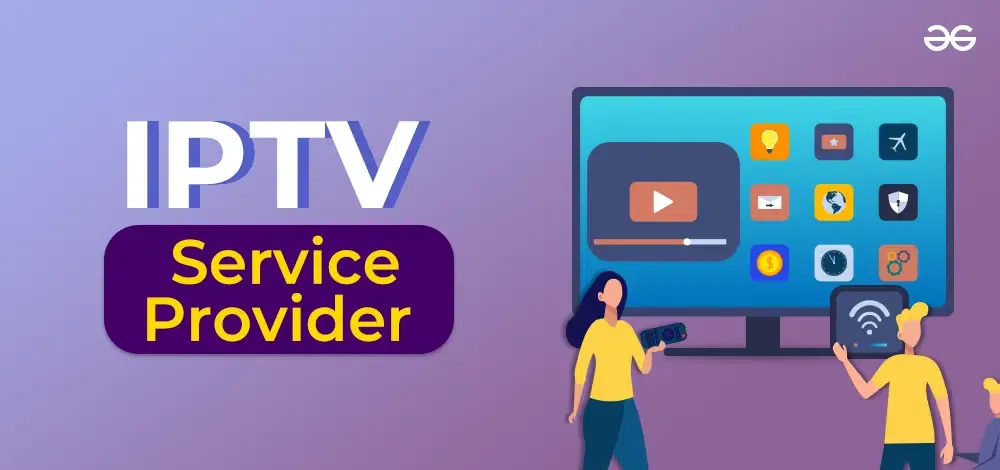Open Unlimited Home Entertainment: Obtain Your IPTV Subscription Today!
Open Unlimited Home Entertainment: Obtain Your IPTV Subscription Today!
Blog Article
Exactly How IPTV Works: A Step-by-Step Overview to Internet Procedure Television Modern Technology
Internet Method Television (IPTV) has revolutionized the method we eat television content, providing a brand-new realm of opportunities with the power of the net. Understanding the ins and outs of just how IPTV functions can clarify the technology that drives this ingenious type of media delivery. From the essential concepts of IPTV to the complex process of material distribution, each step plays a critical role in making sure a smooth viewing experience. In this guide, we will discover the hidden devices that make IPTV a fascinating combination of innovation and home entertainment.
IPTV Basics
In understanding IPTV basics, it is critical to understand the fundamental workings of this technology in delivering television web content over the net. IPTV, which represents Net Method Tv, uses Web Protocol (IP) networks to transmit tv web content to customers' gadgets. Unlike conventional techniques of broadcasting tv web content with cord or satellite signals, IPTV streams media through high-speed net links.

Furthermore, IPTV enables interactive capacities, such as video on demand (VOD) and digital program guides (EPG), enhancing the customer experience by supplying more control and adaptability in accessing material. In general, recognizing the fundamentals of IPTV sets the foundation for discovering its more innovative performances and the benefits it uses to contemporary tv consumption.
Web Content Shipment Refine
Effective web content distribution in IPTV systems includes a well-structured procedure that guarantees smooth transmission of television web content over IP networks. The material distribution process in IPTV starts with the creation of the video clip content, which is then inscribed into electronic format appropriate for IP transmission. This inscribed content is after that firmly saved on servers called media servers. When a customer requests particular web content, the IPTV system obtains the asked for data from the media servers and supplies it to the viewer's gadget online.

Middleware Capability
With the assimilation of middleware, IPTV systems gain boosted performance that enhances user interaction and web content administration. Middleware serves as an important component that links the space between the interface and the back-end framework, assisting in seamless interaction and communication within the IPTV system. One of the key features of middleware in IPTV is to allow personalized customer experiences by supplying features such as interactive program overviews, video-on-demand services, interactive advertising, and customer preferences monitoring. By streamlining these functionalities via middleware, service carriers can use a more vibrant and customized IPTV experience to their clients.

Gadget Compatibility
Provided the critical role of middleware in allowing seamless interaction and content management in IPTV systems, an essential aspect to consider is the compatibility of devices made use of for accessing the IPTV solutions. Gadget compatibility is necessary for making sure a smooth individual experience and ideal performance when accessing IPTV content.
In the context of IPTV, gadget compatibility describes the capability of a gadget to efficiently communicate with the IPTV service, present material properly, and support the essential methods and codecs for streaming video content online. Various devices, such as smart Televisions, i thought about this set-top boxes, smart devices, tablet computers, and computer systems, may have differing degrees of compatibility with IPTV services.
To guarantee a seamless watching experience, it is essential for users to pick gadgets that work with the specific IPTV solution they are using. In addition, IPTV company need to use support for a wide variety of tools to deal with the diverse requirements of their user base. By focusing on device compatibility, both customers and company can improve the total IPTV experience.
High Quality of Solution (QoS)
Thinking about the critical function of maintaining a high requirement of efficiency and reliability in IPTV systems, making certain constant Top quality of Service (QoS) stays a basic element of the customer experience. QoS in IPTV refers to the capability of the system to supply content with very little disturbances, high resolution, and fast filling times. To achieve optimal QoS, different factors need to be attended to. Network bandwidth is important to sustain top quality video clip streaming without buffering or pixelation. In addition, latency, jitter, and packet loss should be lessened to boost the viewing experience.
Provider employ QoS mechanisms such as website traffic useful source prioritization, buffering, and mistake improvement to preserve a stable IPTV service. By focusing on IPTV web traffic over much less time-sensitive information, carriers can make sure smooth playback even throughout height use hours. Buffering aids make up for network changes, additional reading while error adjustment techniques boost information integrity.
Continuous surveillance and optimization of QoS specifications are important to adapt to transforming network problems and user needs. Eventually, a robust QoS structure is crucial for delivering a smooth and pleasurable IPTV experience to users.
Verdict
Finally, IPTV operates with the transmission of television web content over web protocol networks. The innovation involves an organized process of web content distribution, assisted in by middleware functionality to guarantee compatibility across various gadgets. Quality of Service plays a crucial duty in maintaining the effectiveness and reliability of IPTV services. Recognizing the essential concepts of IPTV is important for realizing the complexities of this cutting-edge television innovation.
Report this page